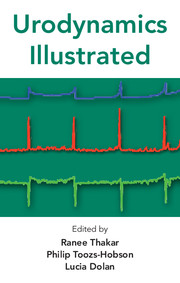Book contents
- Frontmatter
- Contents
- About the authors
- Acknowledgements
- Glossary and abbreviations
- Preface
- 1 Introduction
- 2 Setting up the equipment
- 3 Flow rate testing
- 4 Cystometry
- 5 Videocystourethrography
- 6 Ambulatory urodynamic monitoring
- 7 Urodynamic artefacts
- 8 Assessment of urethral function
- 9 Bladder diaries
- 10 Pad testing
- 11 Pre-test assessment using questionnaires
- 12 Ultrasound as a tool in urodynamics
- Index
5 - Videocystourethrography
Published online by Cambridge University Press: 05 February 2014
- Frontmatter
- Contents
- About the authors
- Acknowledgements
- Glossary and abbreviations
- Preface
- 1 Introduction
- 2 Setting up the equipment
- 3 Flow rate testing
- 4 Cystometry
- 5 Videocystourethrography
- 6 Ambulatory urodynamic monitoring
- 7 Urodynamic artefacts
- 8 Assessment of urethral function
- 9 Bladder diaries
- 10 Pad testing
- 11 Pre-test assessment using questionnaires
- 12 Ultrasound as a tool in urodynamics
- Index
Summary
Introduction
Videocystourethrography (VCU), also known as videourodynamics, uses iodine-based contrast rather than 0.9% physiological saline, to allow simultaneous imaging of the lower urinary tract during urodynamic assessment (Figure 5.1).
Equipment and facilities for VCU
The equipment needed for VCU is similar to that for conventional cystometry, described in chapters 2 and 4. In addition, it will be necessary to have a fluoroscopy unit with a high-resolution image intensifier and a tilt table (Figure 5.2).
Conducting VCU
Set-up, insertion of catheters and methods to reduce artefacts are similar to those for conventional cystometry, described in chapters 2 and 4. The bladder is filled with an X-ray contrast medium, such as isohexol (Omnapaque™, GE Healthcare). The patient may be either supine on an X-ray table or in a sitting position. At the end of filling, the filling catheter is removed and the X-ray table rotated so that the bladder can be imaged with the patient standing. Provocative manoeuvres are then performed.
Urodynamic observations similar to those outlined in chapter 4 are recorded. It is the authors' practice to grade urodynamic stress incontinence as follows: leaking with the first cough is graded as severe incontinence, leaking during a series of three coughs as moderate leakage and leakage occurring only at the end of five coughs as mild incontinence; grading of incontinence may also be based on the actual quantity of urine lost.
Keywords
- Type
- Chapter
- Information
- Urodynamics Illustrated , pp. 55 - 66Publisher: Cambridge University PressPrint publication year: 2011



